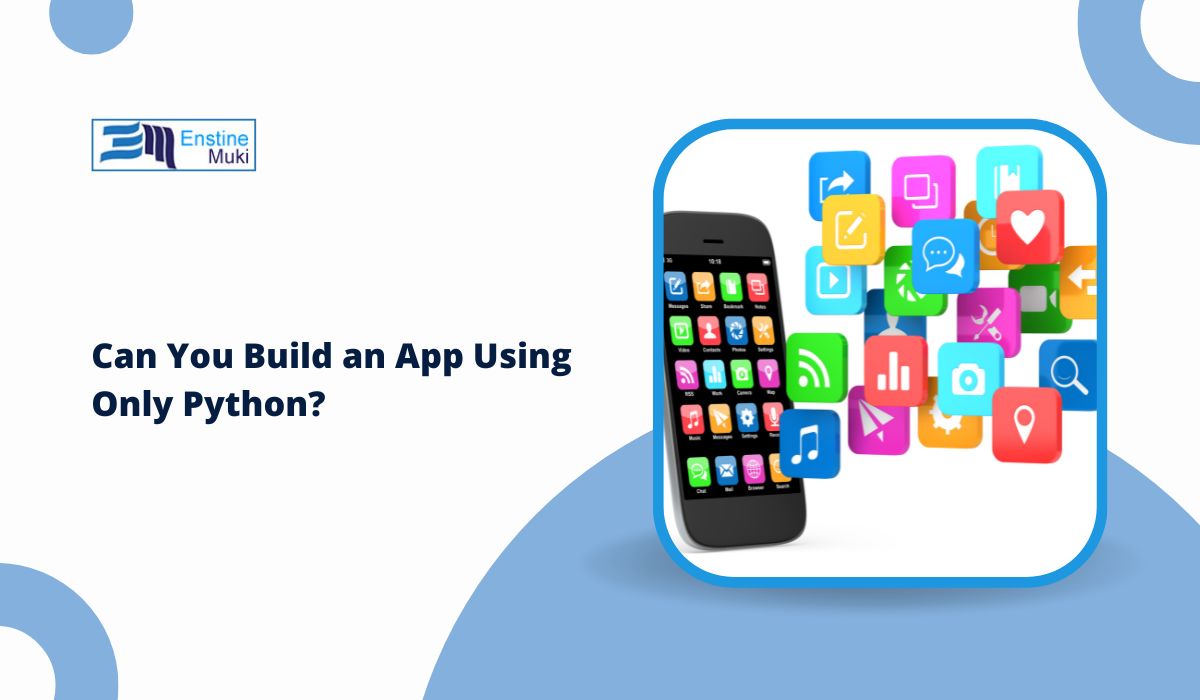Python is a versatile and beginner-friendly language known for simplicity and broad application. But can it power an entire app on its own? The short answer is yes — but with context. Let’s break down what’s possible when sticking to only Python.
What Kind of Apps Can You Build Using Python?
Python can handle a wide range of app types:
- Web applications (using Flask or Django)
- Desktop GUI apps (using Tkinter, PyQt, Kivy)
- Mobile apps (via Kivy, BeeWare)
- Command-line tools
- APIs and backend services
It is also widely used in automation, data science, and machine learning, but those aren’t “apps” in the traditional sense.
Web Apps Built Entirely with Python
Python is a top choice for web development:
- Flask: Lightweight, good for microservices or MVPs
- Django: Full-stack framework with built-in admin panel, ORM, routing, and templating
You can deploy Python web apps on:
- Heroku
- PythonAnywhere
- VPS with Gunicorn + Nginx
Python can handle both backend and templated frontend views, although complex UI often involves HTML, CSS, and JS.
Desktop Applications: Using Python for GUI Development
When it comes to building desktop applications, Python offers a range of libraries that make GUI development accessible even to beginners.
Tkinter
This is the most basic and widely-used option for creating desktop apps in Python. Tkinter comes built-in with Python, so there’s no need for external libraries. While it doesn’t have as many advanced features as other frameworks, it’s great for simple applications.
PyQt and PySide
These libraries provide tools to create more complex desktop applications with modern-looking user interfaces. They support widgets, custom layouts, and themes, making them suitable for professional-grade apps.
wxPython
This is another option for building desktop apps. It’s known for creating applications that have a native look and feel on different platforms (Windows, macOS, Linux).
These libraries provide the necessary tools to build desktop apps entirely in Python, though they come with some limitations when it comes to customizing advanced visual elements compared to frameworks used in native development.
<h3″>Mobile App Development with Python
Mobile development is where Python hits some limits. Still, it’s possible:
- Kivy: Write once, run on Android and iOS. It handles touch, gestures, and native controls.
- BeeWare: Converts Python apps into native apps for iOS, Android, and desktop. Still in active development.
- Tools like Buildozer (for Kivy) and Briefcase (for BeeWare) help package apps.
Limitations:
- Access to native APIs is limited
- UI may not feel fully native
- App store acceptance can be challenging
Packaging and Distribution Options
Once you have created your Python app, the next step is packaging and distributing it. For desktop apps, tools like PyInstaller and cx_Freeze can convert your Python code into executable files, which can be run on other systems without the need for Python to be installed.
For mobile apps built with Kivy or BeeWare, you can use tools like Buildozer to package your app for Android or Briefcase for iOS. This process involves compiling your Python code into a native mobile app format (APK for Android or IPA for iOS), which can then be distributed through app stores like Google Play or the Apple App Store.
For web apps, platforms like Heroku and PythonAnywhere make deployment straightforward, allowing you to host and run your Python web app with minimal configuration. These platforms also offer integration with popular web frameworks like Django and Flask, making it easy to get your app live.
Pros and Cons of Building Apps Only with Python
While Python is an excellent language for app development, it comes with its advantages and challenges.
Pros:
- Ease of learning and use: Python’s simple syntax makes it an ideal choice for beginners and developers looking for a quick way to prototype apps.
- Wide range of libraries: Python has extensive support for third-party libraries, which can help speed up development and add advanced features to apps.
- Cross-platform compatibility: Python supports multiple platforms, making it easy to write code that works across different operating systems (Windows, macOS, Linux).
- Large community support: With Python’s vast community, you’ll find plenty of tutorials, documentation, and open-source code that can help solve any issue you encounter.
Limitations:
- Performance: Python is an interpreted language, meaning it can be slower than compiled languages like C++ or Java. This is particularly noticeable in performance-critical applications like games or real-time systems.
- Limited mobile development: While tools like Kivy and BeeWare exist, mobile app development with Python lacks the seamless native experience of apps built with Swift or Java.
- Access to native features: Although libraries like PyObjC provide access to native OS features, they require additional configuration and are not as robust as using platform-specific languages.
Real Examples of Apps Using Python
Many popular apps have used Python in their development, proving that Python is capable of handling large-scale applications.
- Instagram: The backend of Instagram was built using Django, Python’s high-level web framework. It manages everything from handling user authentication to database queries.
- Dropbox: The desktop client of Dropbox is built using Python. This allows Dropbox to work seamlessly across different platforms while maintaining an easy-to-use interface.
- YouTube: In its early days, YouTube relied heavily on Python for scripts and infrastructure management, particularly for tasks like video encoding and metadata handling.
Final Verdict
Python is a versatile language that can certainly be used to build a variety of apps, including web applications, desktop software, and even mobile apps. However, for performance-intensive applications or native mobile apps, you may need to combine Python with other languages or frameworks. Python is an excellent choice for rapid development, prototyping, and smaller applications, but when it comes to large-scale, performance-critical projects, using platform-specific languages may be more beneficial.
If you’re looking to build a web service, desktop tool, or small mobile app, Python is a great choice. But for large-scale production apps, consider combining Python with other technologies.



